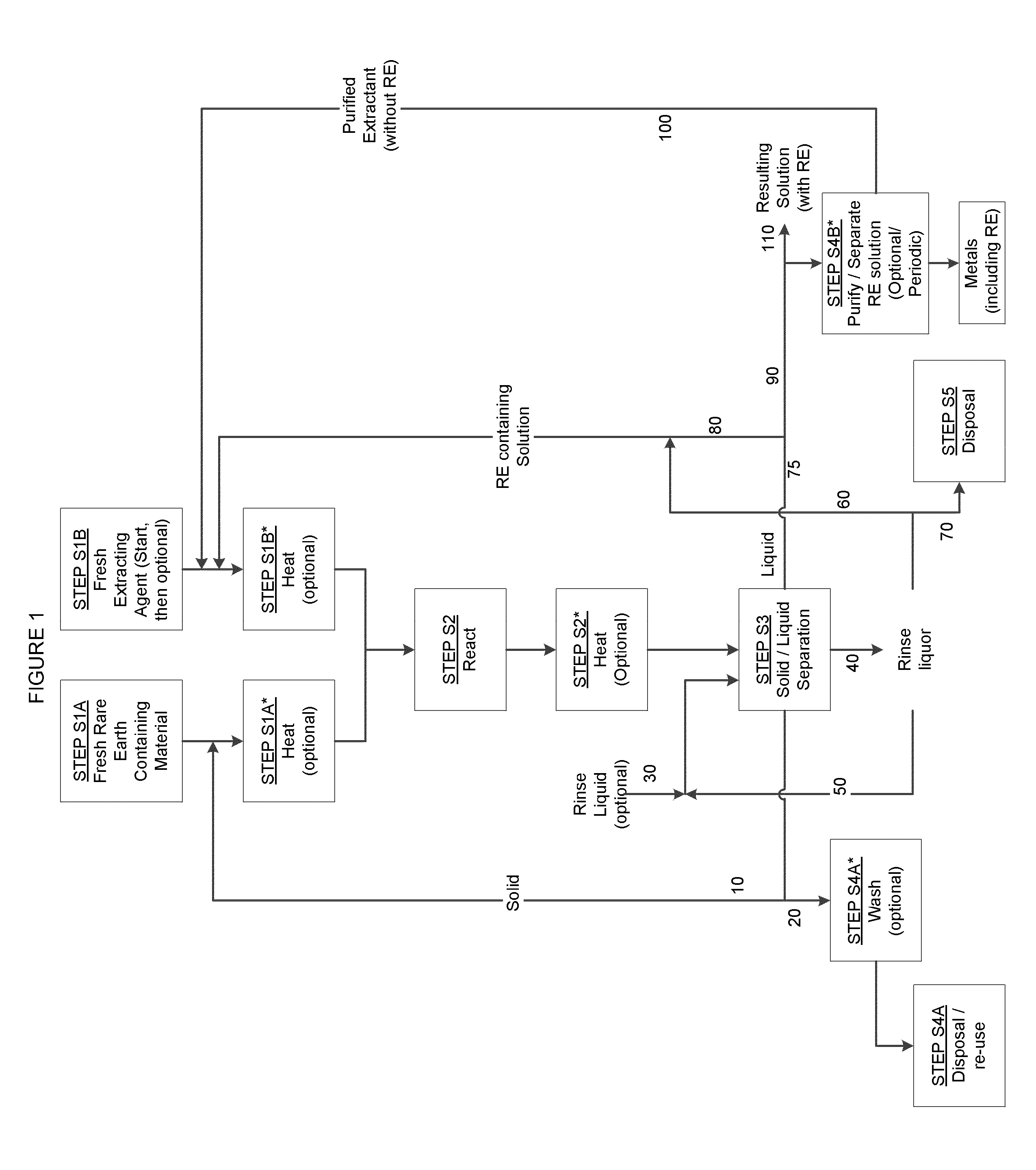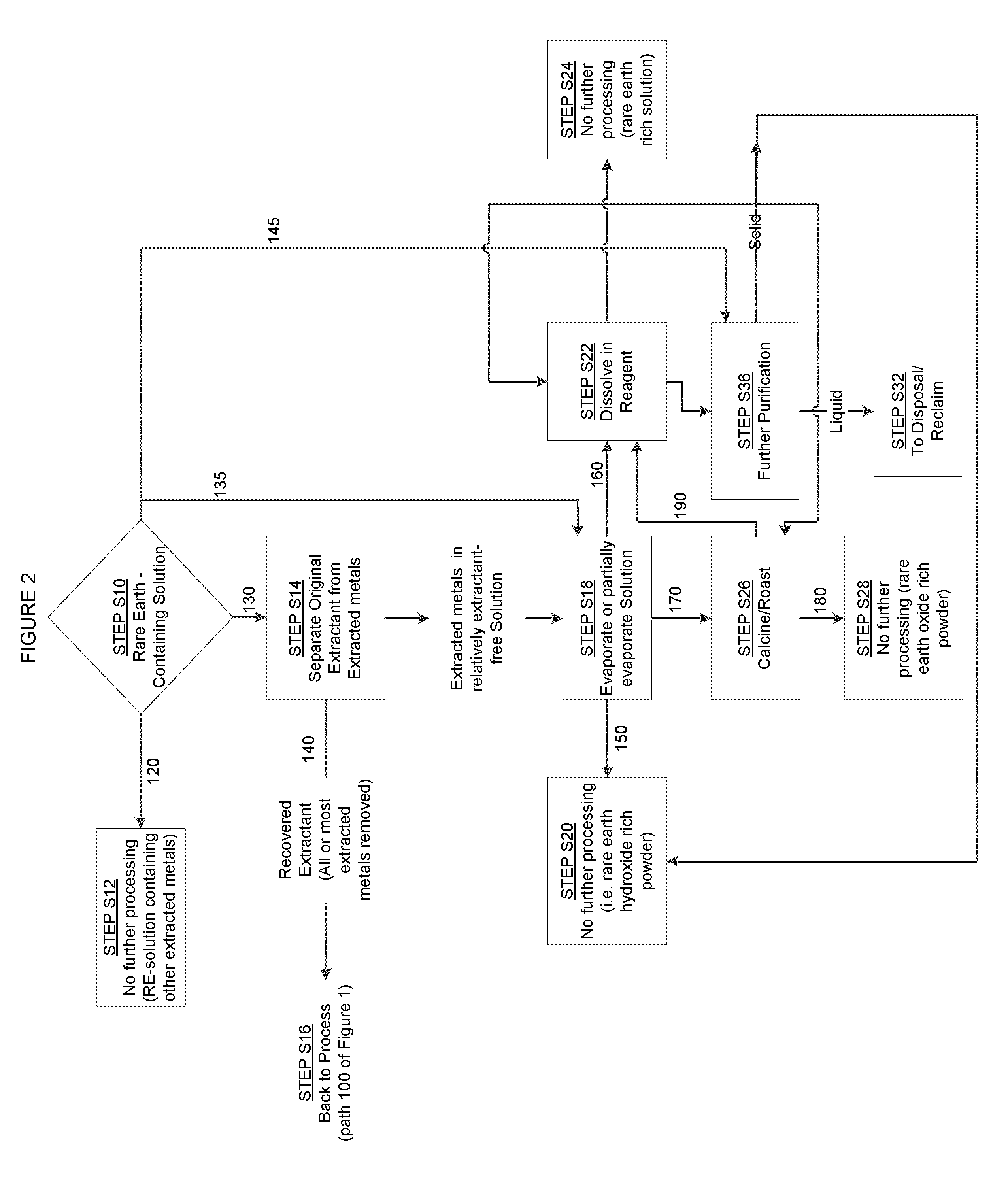Methods of recovering rare earth elements
a rare earth element and metal recovery technology, applied in the field of rare earth element recovery methods, can solve the problems of loss of catalyst aluminum content, difficulty in separating solid product from liquid product, etc., and achieve the effects of improving catalyst performance, improving performance benefits, and reducing environmental impa
- Summary
- Abstract
- Description
- Claims
- Application Information
AI Technical Summary
Benefits of technology
Problems solved by technology
Method used
Image
Examples
Embodiment Construction
[0033]One aspect of the present invention relates to methods of recovering one or more rare earth elements (such as lanthanum (La), cerium (Ce), praseodymium (Pr), neodymium (Nd), etc.) from a rare earth containing material. Turning now to FIGS. 1 and 2, an explanation of the steps involved in examples of some embodiments will be described. Following the description of FIGS. 1 and 2, an explanation of some specific examples will be provided.
[0034]Step S1A of FIG. 1 involves providing a sample of the rare earth containing material (i.e., a material including at least one rare earth element therein, such as lanthanum, cerium, praseodymium, neodymium, and / or alloys thereof), which can be in any desired form, where preferred forms include powders or extrudates. Further, the rare earth containing material (“RE containing material”) provided in Step S1A also preferably includes aluminum. For example, in certain embodiments, the RE containing material is a molecular sieve, a material that ...
PUM
| Property | Measurement | Unit |
|---|---|---|
| Temperature | aaaaa | aaaaa |
| Temperature | aaaaa | aaaaa |
| Mass | aaaaa | aaaaa |
Abstract
Description
Claims
Application Information
 Login to View More
Login to View More - R&D
- Intellectual Property
- Life Sciences
- Materials
- Tech Scout
- Unparalleled Data Quality
- Higher Quality Content
- 60% Fewer Hallucinations
Browse by: Latest US Patents, China's latest patents, Technical Efficacy Thesaurus, Application Domain, Technology Topic, Popular Technical Reports.
© 2025 PatSnap. All rights reserved.Legal|Privacy policy|Modern Slavery Act Transparency Statement|Sitemap|About US| Contact US: help@patsnap.com



